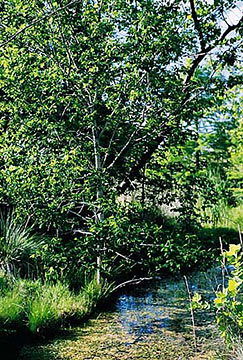 |
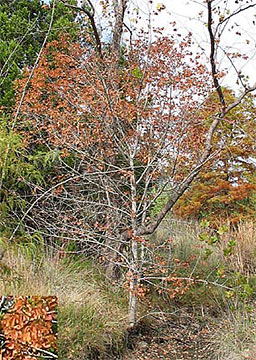 |
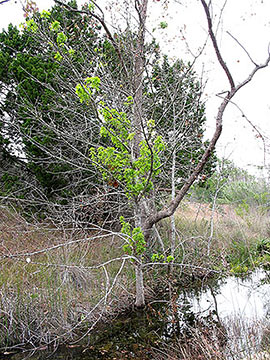 |
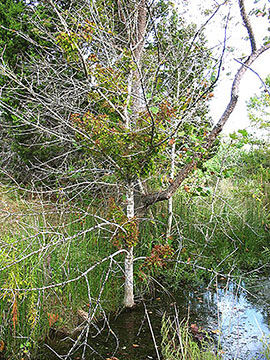 |
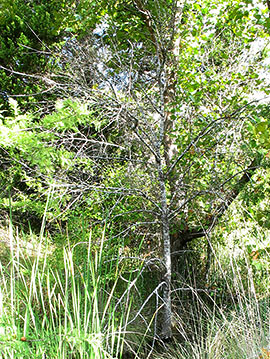
|
May 2004 | Fall 2006 | ‘ash yellows’, Nov. 2009 | ‘ash yellows’, Oct. 2010 | dead, August 2014 |
|---|---|---|---|---|
| F. albicans along Deadman's Creek (dead in 2012) [Click image to enlarge] | ||||
 |
 |
 |
 |

|
May 2004 | Fall 2006 | ‘ash yellows’, Nov. 2009 | ‘ash yellows’, Oct. 2010 | dead, August 2014 |
|---|---|---|---|---|
| F. albicans along Deadman's Creek (dead in 2012) [Click image to enlarge] | ||||

The valley of upper Deadman's Creek in N. Hays County has both green ash/red ash (Fraxinus pensylvanica) and Texas (white) ash (F. albicans), and it would seem that hybridization has occurred. They grow along the creek or in bottomland areas that have strong seasonal moisture. 35 years ago the overgrazed land had three very large trees (trunks c. 2' in diameter) and a few saplings. One collapsed some 25 years ago; one, F. pensylvanica, once reduced to a low trunk with a few smaller branches, has now collapsed; and one large F. albicans (male [staminate]) is still present, but gradually collapsing (shown below).
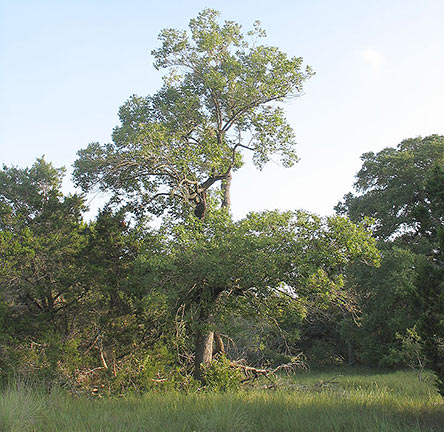 | 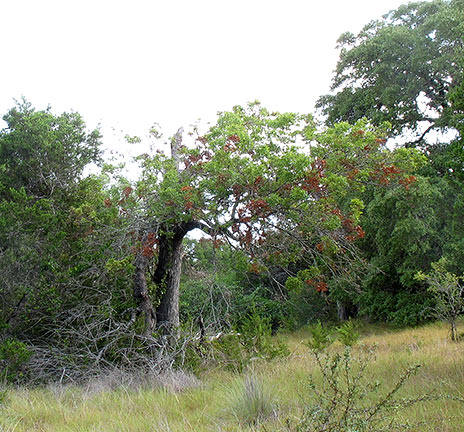 |
|---|---|
| September 2010 | August 2014, drought stressed |
| F. albicans, one of 3 original large trees | |
Many saplings grew to trees of moderate size (c. 25-30'), but in the early years of this century, many of these as well as small saplngs apparently contracted a fatal disease known as ‘ash yellows,’ and died. Green ash seems to have suffered the most — a survey of trees in 2014 found only a single tree — but both taxa were affected. The trees shown at the top and bottom of this page, succumbed and died. Subsequently, in recent years, large numbers of new Texas ash saplings have appeared along the creek.
Determining the species of individual trees has been challenging. Key features include samara form, leaflet color (especially lower surface) & petiolule length, leafscar—bud forms.
However, ash trees are unisexual (dioecious), so the use of samara form is available only for mature female (pistillate) trees.
Only recently I discovered a key that employs leaf scars to distinguish the green ash (F. pensylvanica) from the white ash (F. americana). Numerous web sites illustrate this difference. (Google: "leaf scar" "green ash" "white ash".) Since Texas ash is commonly considered to be a variety of F. americana (i.e., F. americana var. texensis), leaf scars provide one possible test to distinguish the two species. With F. albicans the top of the leaf scar is more strongly notched, with a lateral bud in the notch. By contrast, with F. pensylvanica the top is relatively flat or only slightly notched, with a lateral bud above the scar.
Leaf scars give the clearest distinctions in late fall through the winter when the leaves have detached naturally, leaving behind the scar from the leaf base together with a bud. At other times this feature can be used, but doing so often requires the inspection of several recent leaf scars to locate tokens of an unambiguos scar to make a determination. Older leaf scars are commonly misleading, as the growing bud has expanded into the top of the scar.
Plants with no samaras (including all male, staminate, plants) are best identified using leaf scars.
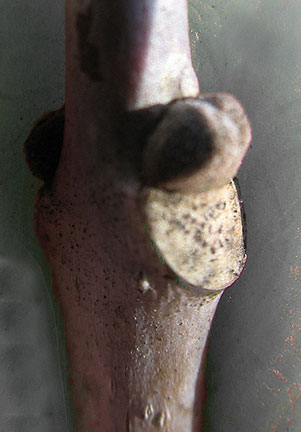 |
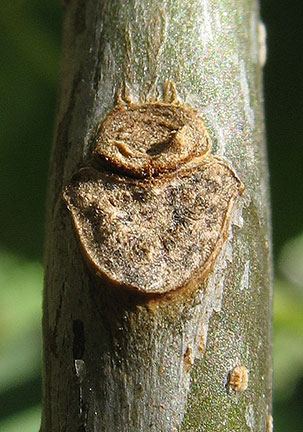 |
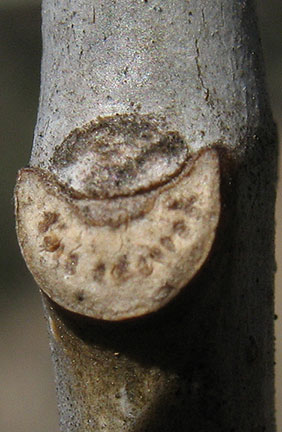 |
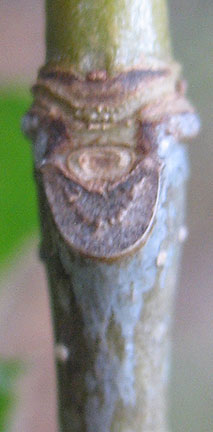 |
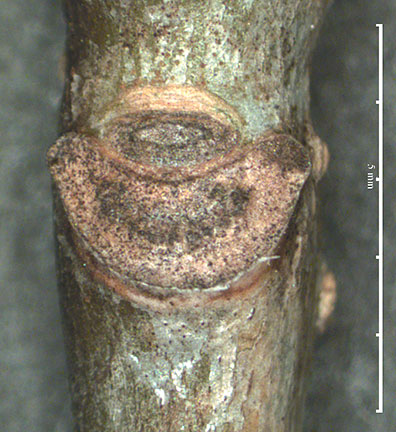 |
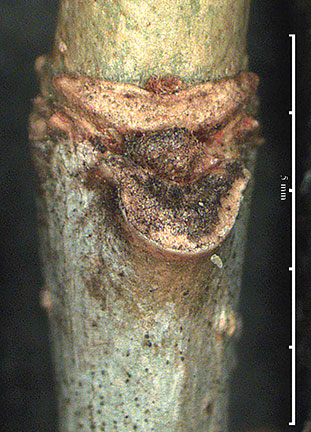 |
|---|---|---|---|---|---|
| March 9 | August 16 | March 2 | September 6 | August 24 | August 24 |
| ← F. pennsylvanica ← | | | → F. albicans → | ||||
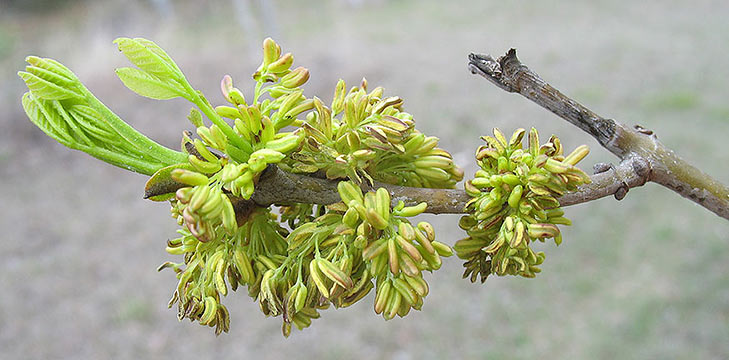 |
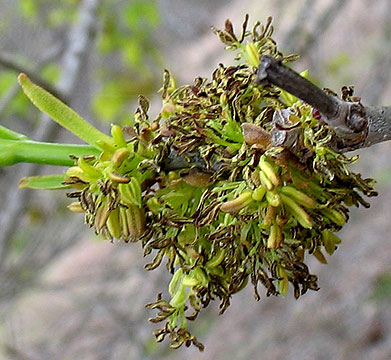 |
|---|---|
| March 21, 2007 | March 19, 2010 |
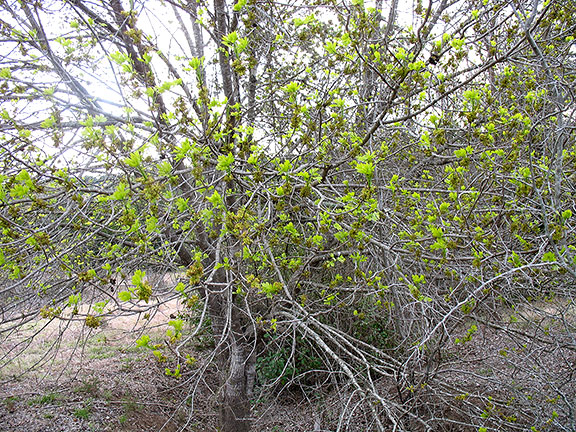
Female, pistillate, flowers do seem to have distinctive calyces, but our sample may be too small to determine this.
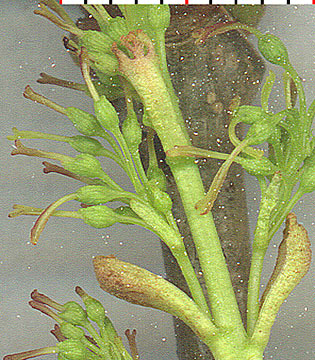 |
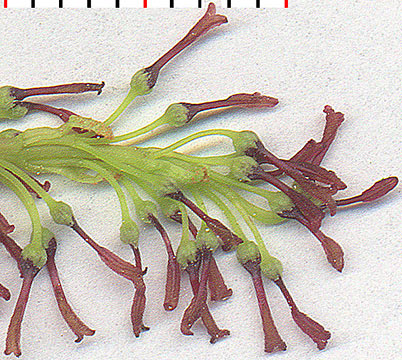 |
| F. albicans | F. pensylvanica |
|---|
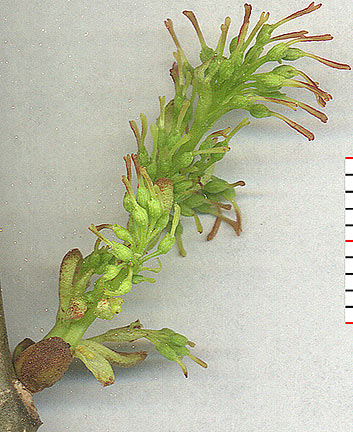 |
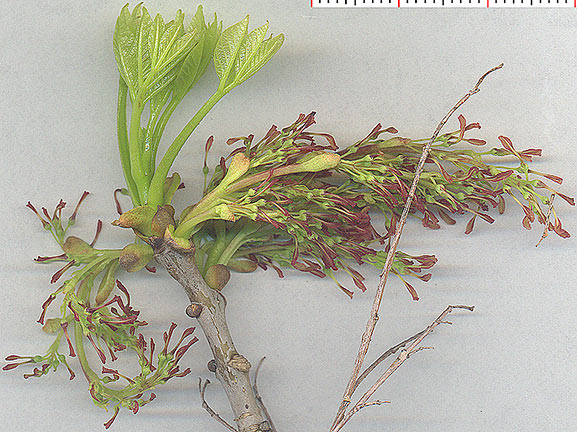 |
| F. albicans | F. pensylvanica |
|---|
Fall leaf color may or not reveal the species difference. Numerous trees took on a maroon color. The F. albicans photo at the top of the page was taken the same day as the following, which had never produced samaras, but recent inspection of leaf scars show to be F. pensylvanica.